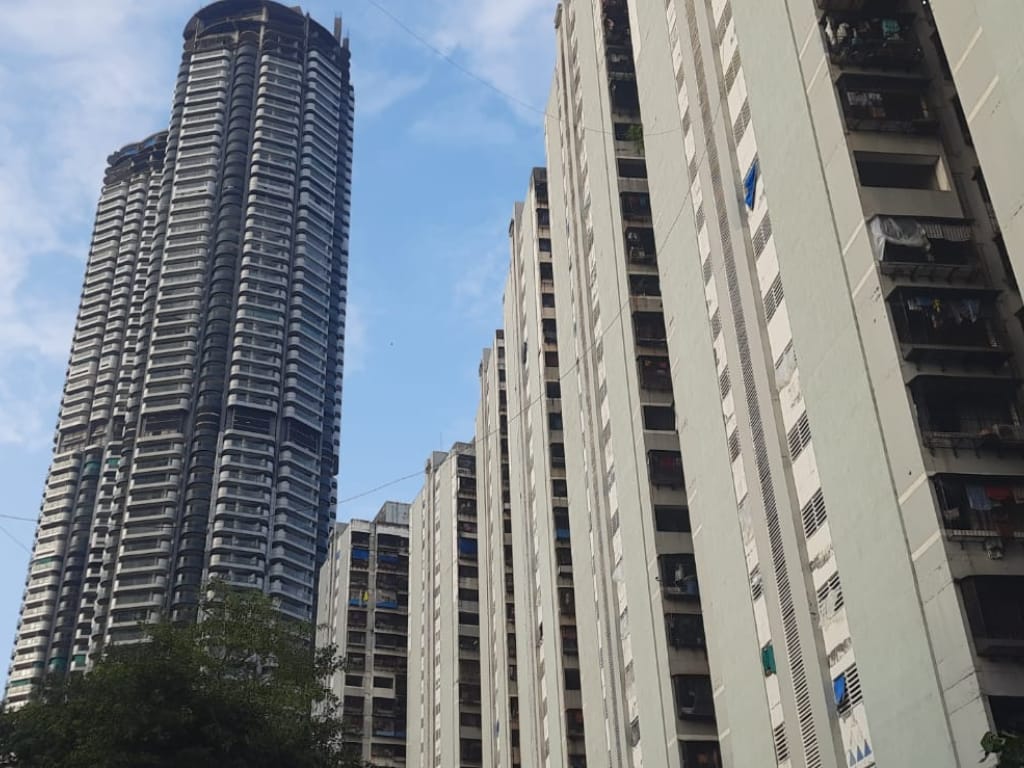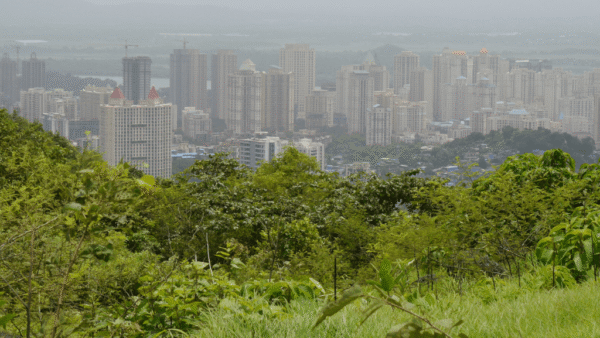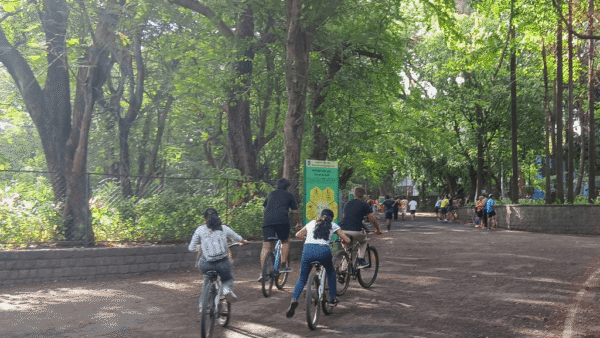The American philosopher and activist Noam Chomsky once explained the standard technique of privatisation of public goods and services. The first thing to do is defund – to make sure that things don’t work. People get angry, and ask for change, so you hand them over to private enterprise.
For many decades, the dominant view has been that the state must hand over to private enterprise all things that were traditionally done by the public sector. Public goods and services that have in part been institutionalised as basic rights – housing, health, education, environment, public transport – must now be offered up as business opportunities to the private sector. The commitment to privatisation runs deep, to the extent that state officials themselves decry the government as inept and prone to corruption, and herald the private sector as the pillar of expertise and efficiency. Even when privatisation ruins the very thing it purportedly seeks to revive, the faith remains unscathed. Privatisation has become pure ideology, simply beyond the reach of evidence.
In Indian cities, the catchphrase for privatisation is Public Private Partnerships (PPPs). The World Bank conceptualises[1] a PPP “as an instrument to respond to market failures while minimising the risk of government failure.” The International Monetary Fund (IMF) defines it as an “arrangement where the private sector supplies assets and services that traditionally have been provided by the government.” Urban planners and policy makers in India have stumbled over themselves to enforce this doctrine, but three decades since the embrace of privatisation policies, the supposed gains in “innovation,” “efficiency” and “quality standards” are nowhere to be found. In practice, all the different forms of PPPs serve the same objective, which is to restructure a public utility or service to generate revenue streams for private entities. In other words, the real purpose of a PPP is to transform a system of social provisioning into a guaranteed source of profit.
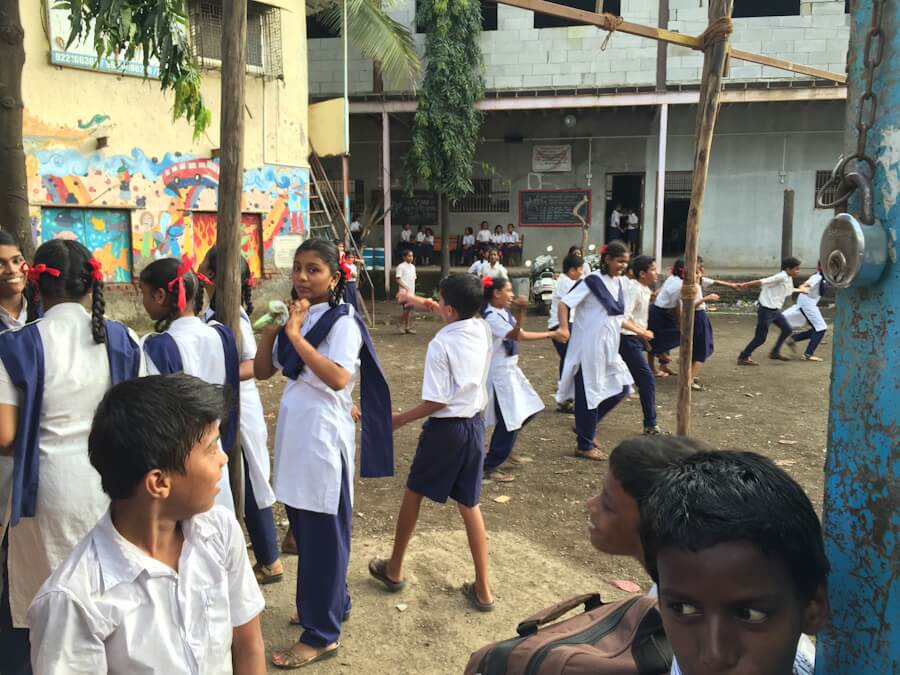
Photo: Wikimedia Commons
Privatisation at any cost
In Mumbai, PPPs are considered the necessary condition for all urban infrastructure and service provisions: slum redevelopment, health care, education, public transport, public spaces, basic services. In April this year, the BMC announced the privatisation of five major hospitals[2] in Borivali, Bandra, Vikhroli, Govandi and Mulund (the Borivali proposal was later withdrawn after opposition from unions). A new hospital completed after 12 years in Mankhurd, meant for rehabilitated residents, will be handed over to a private entity. We are told that the Mankhurd hospital will “reserve” 150 of the 410 beds for the poor. The BMC Commissioner claimed[3] that the PPP model will “enhance healthcare accessibility while reducing operational costs…[and to] minimise out-of-pocket expenses for patients while ensuring sustainable healthcare operations.”
However, it is no secret that the record of free and subsidised beds in charitable hospitals has been abysmal. For years, public health activists have pointed out that hospitals have under-reported the number of reserved beds, or not admitted poor patients; a recent report[4] shows that 71% of free beds and 93% of subsidised beds in charitable hospitals remain unoccupied. Meanwhile, the 2016 CAG report[5] pointed out that these hospitals charged poor patients in violation of guidelines, causing undue financial burden on them.
All of this is notwithstanding the fact that affordable healthcare facilities in Mumbai are generally inadequate, and extremely inadequate in areas where they are most needed. In other words, the privatisation of healthcare has thus far neither enhanced accessibility, nor has it minimised out-of-pocket expenses for the poor. But instead of looking at the evidence, the authorities are unrelenting in their crusade to privatise everything.
Also in April, the BMC decided[6] to hand over land reserved for schools to private parties to build and run. Such a PPP model was first proposed in 2012 but encountered strong opposition from people’s representatives. The proposal was revived in 2017 and 2018, only to be rejected again. Since then, the share of allocation for education in the BMC budget has steadily declined: from 9.7 percent in 2017-18, to 7.5 percent in 2021-22, to 5.3 percent in the latest (2025-26) budget.
This despite the fact that a survey[7] commissioned by an NGO in 2017 revealed that 48 percent of respondents unhappy with municipal schools cited “poor facilities” and 46 percent cited “poor quality” as their main reasons. But instead of upgrading facilities and quality of education, the BMC reduced funding to the already poor quality education for the poor. Defunded and neglected, the civic school system is now being handed over to private developers. The private operators will run the school for 30 years and “reserve” 25 percent seats for families who cannot afford the unrestricted fees. Effectively, this is the beginning of the end of public education in Mumbai.
There is perhaps no better example of the intentional decline and shrinkage of a public service in Mumbai than the public bus system. With the “reforms” to the Electricity Act in 2003 – which was meant to facilitate entry of private providers in the power distribution sector – the cross-subsidy arrangement between the electricity and transport division of BEST was discontinued[8]. The arrangement had provided reliable funding to the bus system for many decades. As the deficits of the bus system began to mount, the BMC Commissioner declared the bus service as “loss making” and “inefficient,” and in 2017 decided to reduce buses, discontinued routes, and increased fares.
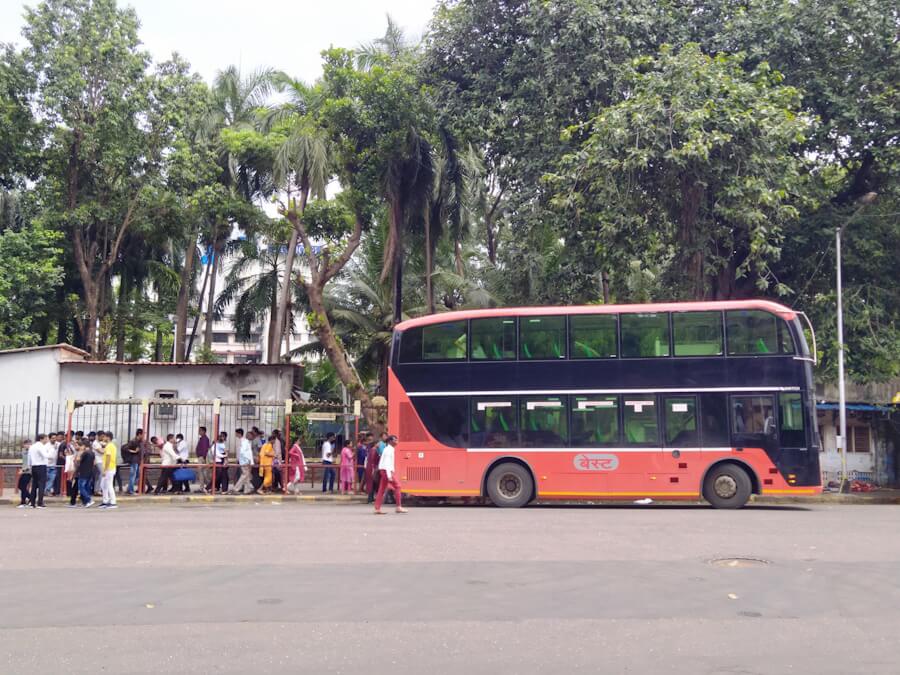
Photo: Wikimedia Commons
So instead of funding BEST, the BMC Commissioner manufactured a crisis which supplied the pretext to outsource operations to a range of private contractors. There is no evidence that the BMC or BEST explored any other alternatives to improve the utility’s performance, or carried out any cost-benefit analysis before roping in private operators. The result? From a fully public fleet of 4,700 buses in 2011, the BEST now has less than 2,594 total buses out of which only 437 are publicly owned.
“Losses” continue to mount, and privatisation has itself unleashed[9] a whole range of social costs on the city in terms of service disruptions, bus breakdowns, accidents, fall in ridership, long waiting times, and poor quality services. None of these problems have shaken the fidelity of the authorities to the privatisation model. On the contrary, the fares of buses have now been irrationally doubled (predictably resulting in a fall in ridership) and the BEST has sought the assistance of an international consultant to “redevelop” four of its depots to generate “non-fare revenue.”
And then there is slum rehabilitation, the most monumental PPP scheme in Mumbai. When it was launched, the Slum Rehabilitation Authority was expected to rehabilitate 8,00,000 families in five years. However, after 26 years, only 3,48,863 in-situ rehabilitation tenements have commenced under the scheme. The number of actually rehabilitated families are fewer; in 2020, the Chief Minister revealed[10] that an estimated 2,06,000 families have been allotted homes. This means that by 2020 on average only 8,963 families had been rehabilitated per year since the scheme was launched.
Mumbai still has about 1.25 million households still living in slums. Therefore even by the narrow metric of housing output, the PPP scheme of slum rehabilitation ought to be considered a failure. And since the scheme is based on date-line or “cut-off date” entitlements – it only provides replacement units for a limited number of “eligible” households. The ineligible dwellers have no choice but to find accommodation elsewhere, typically in other slums. This means that every SRA project tears down more houses than it builds.
Notwithstanding the mission of the SRA to create a “slum free Mumbai,” every SRA project creates a net deficit of affordable housing stock which ensures that slums will change form and location but never be eliminated. But even the rehabilitation buildings are now officially acknowledged as unfit for habitation. The Chief Minister a few days ago announced[11] a new scheme to (re)redevelop slum rehabilitation buildings “which have now become vertical slums.” It is indeed a striking indictment of the scheme by the government, that a PPP program that promised to house people in better conditions in fact produced slums in place of slums.
Why the move away from public goods
Margaret Thatcher once said there is “no such thing” as society, that “there are individual men and women and there are families and no government can do anything except through people and people look to themselves first.” The instruction is clear: think about yourself, not about other people. Don’t worry about the elderly couple who have no affordable means to travel late at night because bus routes need to be “rationalised.” Don’t fret about women who can’t afford maternal care, because the “operational costs” of public hospitals need to be reduced. Don’t be concerned about education for children from poor households because those schools are “loss making.” Don’t lose sleep over displaced slum workers because the developer will deliver the “highest and best use” of land.
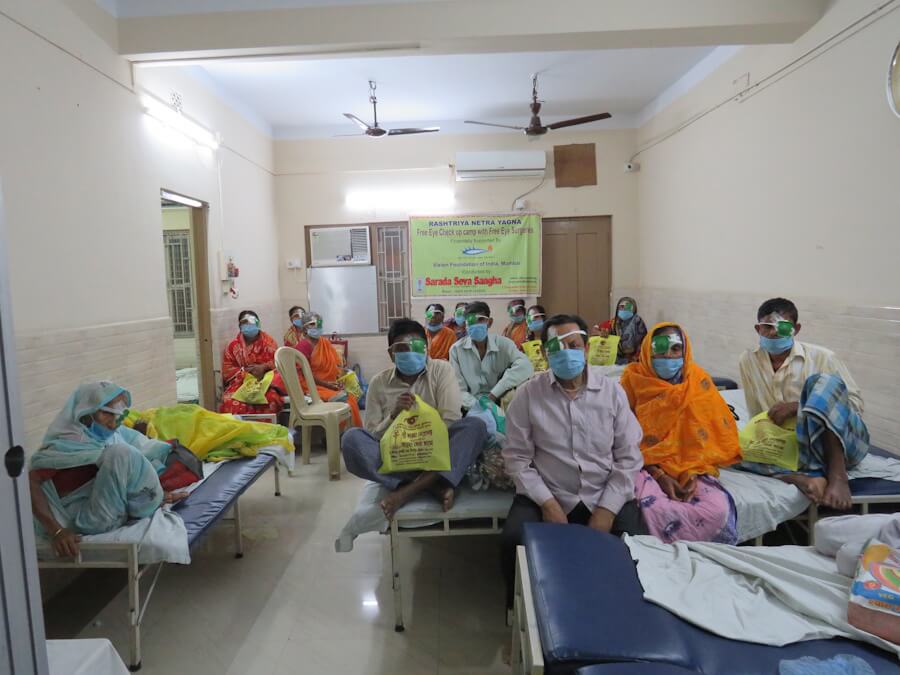
Photo: Wikimedia Commons
In this model, social rights are humbug, and the only thing that matters is enabling businesses who compete for customers. The job of government is to enable private profiteering, not to provide public goods and services. It is no surprise that Thatcher’s nostrums set in motion the disastrous privatisation of the British railways[12], that resulted in its fragmentation, steep fare hikes, closure of stations and routes, deterioration of rail safety, and an increase in rail subsidy to five times the level before privatisation was initiated. Privatisation must be pursued even when it makes no social or economic sense. Governments justify it as a means of raising revenue, to signal their broader commitment to market reform, or to promote competition, efficiency and productivity in the delivery of public services. All of these claims are convenient myths.
Public enterprises can be made more efficient without privatisation, and, as the Mumbai experience shows, privatisation can quite often make a well-functioning public system inefficient as well as dysfunctional. Instead of raising revenues by taxes for the subsidised provision of basic services, the privatisation spree has increased the burden of taxes, imposed levies and monetised assets, while worsening the scope and quality of service provision. And although the profit motive does drive private firms to “reduce costs,” the social costs of cost-cutting measures are always ignored by the champions of privatisation.
For instance, in the case of BEST, contracting companies have cut costs by (a) overworking and underpaying their workers; (b) by cutting down on costs of maintenance and upkeep of buses; (c) and by using their status as essential service providers to renegotiate contracts to extract more revenue from the authority. In 2023, one BEST contractor pulled its buses from the roads after being warned by the BEST for non-payment of wages and frequent breakdowns. In 2024, another contractor pulled its buses after being slapped a fine for disruption of services – but the Bombay High Court allowed the contractor to withdraw its buses. It is telling that while the force of the law curtails the collective bargaining rights of unions working in the essential services sector, it safeguards the right of private contractors, as owners, to walk away even if they cause great inconvenience to the public. The point is that privatisation surrenders what is in public ownership and thereby public control to unaccountable private entities.
Welfare for the wealthy
Pro-privatisation advocates attack subsidies for basic services by insisting that those who do not use a good or service must not be made to pay for it, and concomitantly, all services must be provided on the basis of “full cost recovery.” Even as principles, these maxims confuse immediate use with general benefits. Good quality public education produces a more informed population and higher productivity – benefiting everyone, even those who do not personally use it. A subsidised public transport service facilitates the labour market as well as private consumption by getting workers at low cost to workplaces and buyers to markets, which benefit employers and businesses who may not use them. The difference between the cost to the government of providing a public service and the revenue from its users is a social wage (or subsidy), which provides positive externalities in the form of better living standards of working people and enhancement of general economic efficiency.

Photo: Wikimedia Commons
In practice, however, the principles of “users must pay” and “full cost recovery” function as technocratic justifications to steal from essential social programs and divert money into welfare schemes for the wealthy. The public always pays, the question is what is being paid for. The city and state government have emptied the treasury and burdened future generations by building energy-guzzling extravagances for car owners, by offering lucrative contracts to construction companies, by granting attractive revenue streams to private operators, by gifting away valuable public land to land developers. The BMC is the richest municipal corporation in India, and faces no “shortage of funds” constraints; in fact it ought to be accredited as the most profligate local body in the country. But for essential needs of the toiling majority, it feigns poverty and promptly institutes measures for “full cost recovery.”
Those who believe that private partners in PPP projects bring in expertise, technology and investment, the case study[13] of the Delhi Airport Metro may provide some sobering insights. As the study concludes: “the private partners contributed neither technological know-how, nor capital, nor competence in estimating demand, nor competence in operating and maintaining the infrastructure.” Despite contributing nothing, the private partners – an SPV headed by Reliance Infrastructure – was granted an arbitral award of Rs 5,000 crore after terminating the contract with the public agency. The World Bank and its devotees may continue to advocate PPPs as an instrument for combining the best of the private sector and the public sector. But in truth, PPPs are little more than an instrument for enriching private firms at public expense.
Hussain Indorewala teaches at the Kamla Raheja Vidyanidhi Institute of Architecture and Environmental Studies (KRVIA) in Mumbai and is a PhD researcher at the Indian Institute of Technology, Bombay.
Cover photo shows Slum Rehabilitation Authority buildings to the right with
sub-standard quality and slum-like life for inhabitants while a posh private tower looms large nearby.
Credit: Nikeita Saraf

